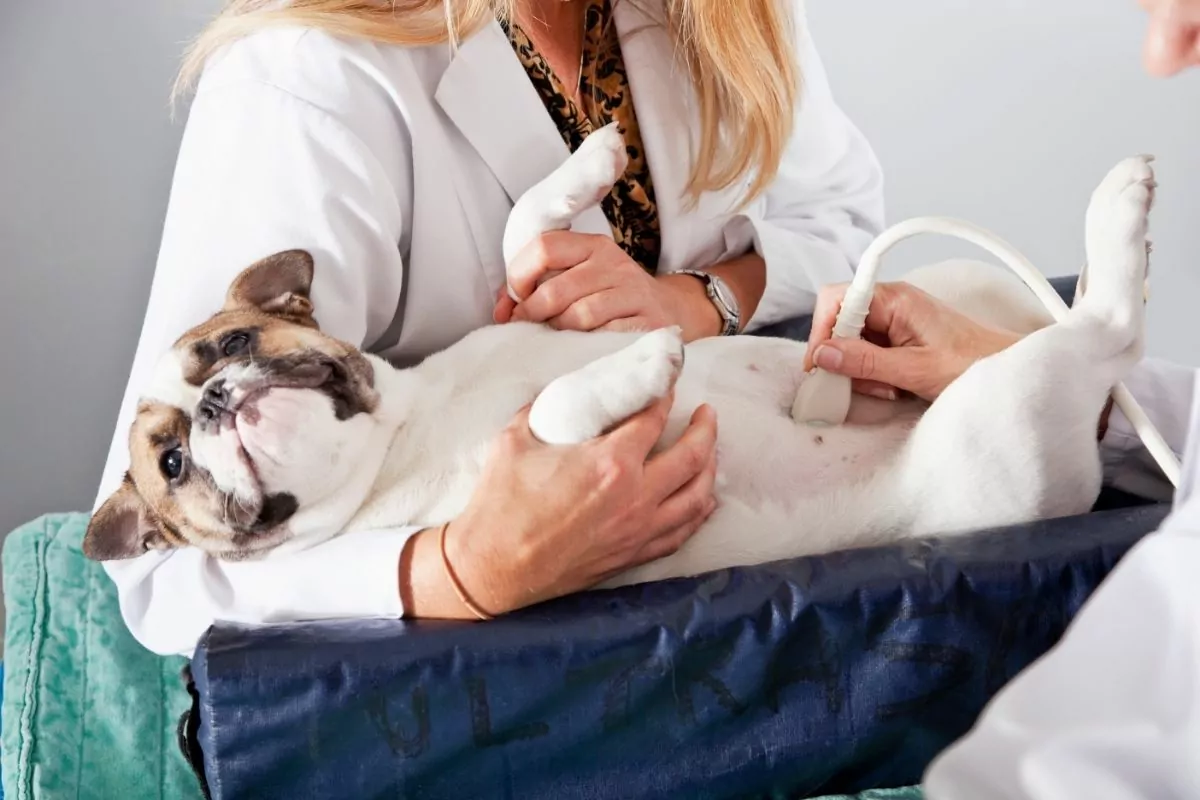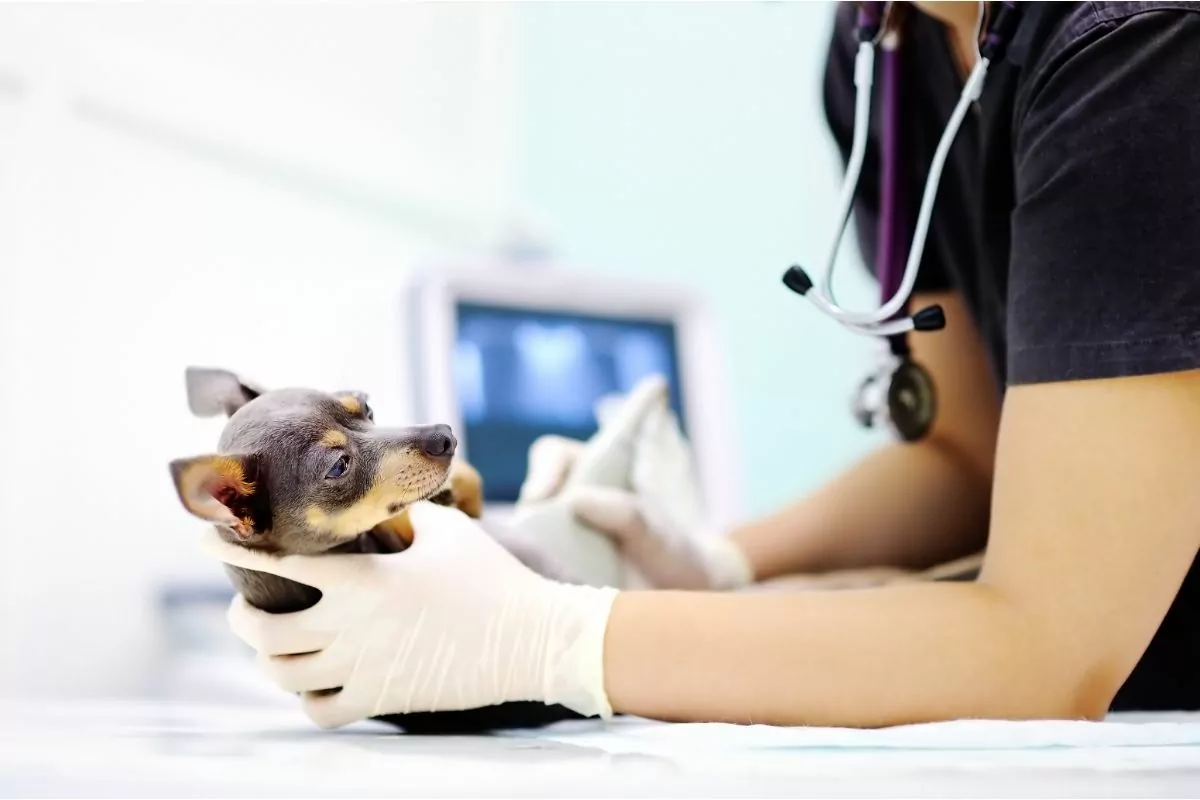Can Dogs Have False Pregnancies?
False pregnancy is also known as pseudopregnancy in dogs or pseudocyesis.
But what is a false pregnancy in dogs? False pregnancy in dogs is a condition where dogs exhibit the same physical and behavioral changes a pregnant dog does, despite not being pregnant themselves. This is a normal biological condition, but it may concern some owners as they are worried their dog is pregnant.
So you’re probably asking yourself, how can I tell if my dog is pregnant or having a false pregnancy? We will answer that and all your other phantom pregnancy dog questions in this article. So read on to find out more!
What is a False Pregnancy in Dogs?
For dogs, false pregnancy is a normal process after a heat. When an entire female goes on heat, her body prepares for possible pregnancies in dogs, and hormone changes occur.
When a dog is not pregnant but behaves the same way as a pregnant dog, and her body changes like a pregnant dog, we call this a false pregnancy or phantom pregnancy in dogs.
Signs of False Pregnancy in Dogs
Signs of false pregnancy in dogs are the same behavioral and physical changes that a pregnant dog will show, confusing an owner. Below is a list of some of the common signs you might notice in your dog.
Behavioral Changes
Two of the most common signs owners will report in a dog with a false pregnancy includes restlessness and nesting.
Nesting involves dogs bringing blankets or other objects to their bed to make a nest. Some dogs choose to build a nest in different spots, such as in your cupboard or under your bed.
Dogs may also “mother” objects such as toys, carrying them around, putting them into their nest, and protecting them.
False pregnancy in dogs can also cause anxiety or even some aggression. Some female dogs can become aggressive if their nest or “puppies” (i.e., toys) are disturbed or moved. It is essential to be careful and not put yourself in harm’s way. It is safer to let your dog mother their toy or nest in their bed and not intervene if possible.
The hormonal changes leading to anxiety can be severe enough a dog may stop eating and be reluctant to leave her nest.

Physical Changes
Just like a pregnant dog, signs or symptoms of false pregnancy in dogs can lead to physical changes as their body prepares for puppies to be born.
You may notice your dog’s mammary glands and nipples enlarge, and they may produce milk. The swelling associated with mammary gland development may be uncomfortable, and you may notice your dog licking at their glands.
Occasionally, a false pregnancy dog may drink more water and urinate more often. They may also eat more and gain weight.
Reasons for Stress Pregnancy in Dogs
Stress pregnancy in dogs is a term some people use to describe pseudopregnancy, but what is why a dog has one at all?
After a heat, if a dog is or is not pregnant, the same hormonal changes occur. That is, progesterone goes down, and prolactin increases. These hormones are necessary to help a fetus implant into a pregnant dog’s uterus. But that’s not all these hormones do. They also cause physical and behavioral changes, which you, the owner, observe.
It is these hormonal changes that trigger a false pregnancy to occur. Pseudopregnancy is not a sign of disease. It is quite the opposite. It shows that your dog had a regular cycle and responded appropriately to the hormonal changes occurring inside her body.
These hormonal changes do not occur in neutered female dogs but can occur if a dog is spayed while on heat as there is a sudden drop in hormones.
How is a False Canine Pregnancy Diagnosed?
A veterinarian will be able to diagnose a false pregnancy in your dog, so the first step is to make an appointment to see them.
Once there, your veterinarian will ask questions about your dog’s history and presenting signs. Also, they will perform a physical examination. If there is no chance your dog could be pregnant, then a false pregnancy might be suggested without further tests.
If there is a chance your dog could be pregnant, then further dog pregnancy tests will be required to rule out pregnancy. Options to diagnose pregnancy in dogs include a blood test measuring the hormone relaxin, an ultrasound, or an x-ray to look for puppies.
In some instances, your veterinarian may recommend further tests to rule out some less common causes of the signs seen in false pregnancy. For example, cancer and hypothyroidism can be ruled out through blood tests, urinalysis, imaging, or biopsy.
Veterinarians will typically recommend these further tests if the false pregnancy does not resolve as it is expected to.
How is a Phantom Pregnancy in Dogs Treated?
In most cases, phantom pregnancy in dogs does not require treatment and will resolve on its own in 2 to 3 weeks. However, treatment is not recommended unless your dog’s signs are unusually prolonged or severe and issues such as mastitis (mammary gland infection) develop.
Mammary gland or nipple stimulation can cause the phantom pregnancy to continue and lead to milk production. Preventing your dog from licking their nipples by using a t-shirt, cone, or inflatable collar can help to resolve the phantom pregnancy sooner. In addition, ensure not to touch your dog’s mammary glands, as any stimulation can be detrimental.
Veterinarians have used a variety of hormonal and medical treatments to stop lactation in dogs with a false pregnancy. Still, typically the side effects of these medicines outweigh the benefits.
When Does Pseudopregnancy in Dogs Occur?
Pseudopregnancy occurs as hormonal levels change after a heat (estrus) in an entire female dog. For example, once progesterone starts to drop and prolactin rises, the signs of pseudopregnancy can begin. These hormonal changes occur about 6 to 8 weeks after a heat.
A spayed female dog will not have a false pregnancy.
Pseudopregnancy can occur at any age and will not happen after every heat. How long and severe a false pregnancy can vary between dogs and between heat cycles for one dog.

Management and Recovery of Phantom Pregnancy in Dogs
The management and recovery of phantom pregnancy in dogs will usually be straightforward. Most female dogs will return to normal within a few weeks as their hormones cycle again.
Female dogs who have a false pregnancy will often have them again for their next heat.
Spaying stops the heat cycle and hormonal changes, preventing future false pregnancies. However, if a dog is spayed during an episode of false pregnancy, that won’t stop the symptoms straight away and may still take a few weeks to resolve.
FAQs on Pseudopregnancy in Dogs
Why is My Dog Lactating?
The production of the hormone prolactin causes lactating. Female dogs will typically lactate before giving birth to puppies, but dogs experiencing a false pregnancy can also lactate.
There are some less common causes of lactation, such as cancer, so if you are unsure why your dog is lactating, it is best to take them to the vet.
My Dog is Producing Milk but isn’t Pregnant?
As discussed above, false pregnancies can also lead to lactation, particularly if your dog can lick her nipples or you are touching them unnecessarily. In addition, stimulation of the nipples will encourage lactation and should be prevented.
If your dog is not experiencing a false pregnancy but is lactating, then there could be something serious going on, such as infection or cancer, and you should get your dog checked out.
How Can I Tell if My Dog is Pregnant or Having a False Pregnancy?
If there is no chance your dog could have gotten pregnant, they are likely experiencing a false pregnancy, but you should take them to the vet to be sure.
Your veterinarian can check to see if your dog is pregnant by checking relaxin (a hormone in the blood), performing an ultrasound, or doing X-rays to look for puppies. If your dog is confirmed not pregnant, your veterinarian may diagnose them as having a false pregnancy.
How Long Does a Canine Pseudopregnancy Last?
Typically a pseudopregnancy will last 2 to 3 weeks and is self-limiting. However, if your dog shows signs of false pregnancy lasting longer than three weeks, you should take them to a vet.
Is False Pregnancy in Dogs Dangerous?
No, false pregnancy is not dangerous, and it is a natural process in entire female dogs. However, mastitis could develop if your dog produces milk during their false pregnancy. This is why lactation should be prevented by limiting stimulation of your dog’s mammary region.
How Can I Help My Dog Through Phantom Pregnancy?
Most dogs will manage phantom pregnancy independently without much input from their owners. However, you can help your dog by preventing mammary stimulation either by stopping them from licking themselves or avoiding touching the area yourself.
If your dog is dealing with aggression or anxiety during their phantom pregnancy, you can take them to the vet, who can prescribe medicine to help them calm down if needed.
How Common is Pseudopregnancy in Canines?
False pregnancy only occurs in entire female dogs. It is a natural process and, therefore, reasonably expected in this group of dogs.

Final Thoughts
As you will have learned, pseudopregnancy is a natural process in female dogs which follows after their heat. It is caused by the dropping of progesterone levels and the increasing prolactin levels.
Signs of false pregnancy in dogs will typically involve physical changes around mammary and nipple enlargement and behavioral changes such as nesting and mothering.
Most dogs that experience false pregnancy do not require treatment as it is a self-limiting condition, but it is recommended to take your dog to the vet to rule out pregnancy as this can present the same way.
Helping to prevent mammary and nipple stimulation will ensure your dog’s pseudopregnancy resolves quickly to stop it all together get her desexed.
